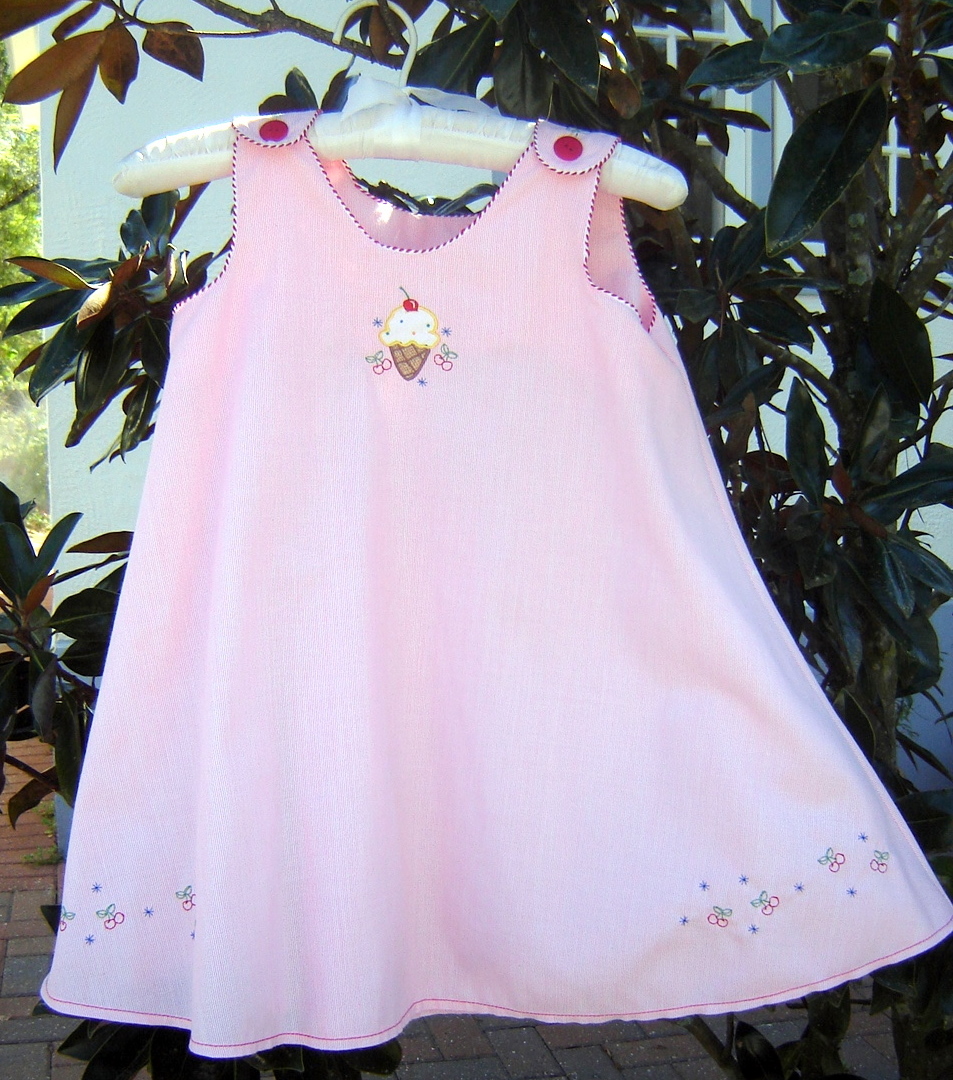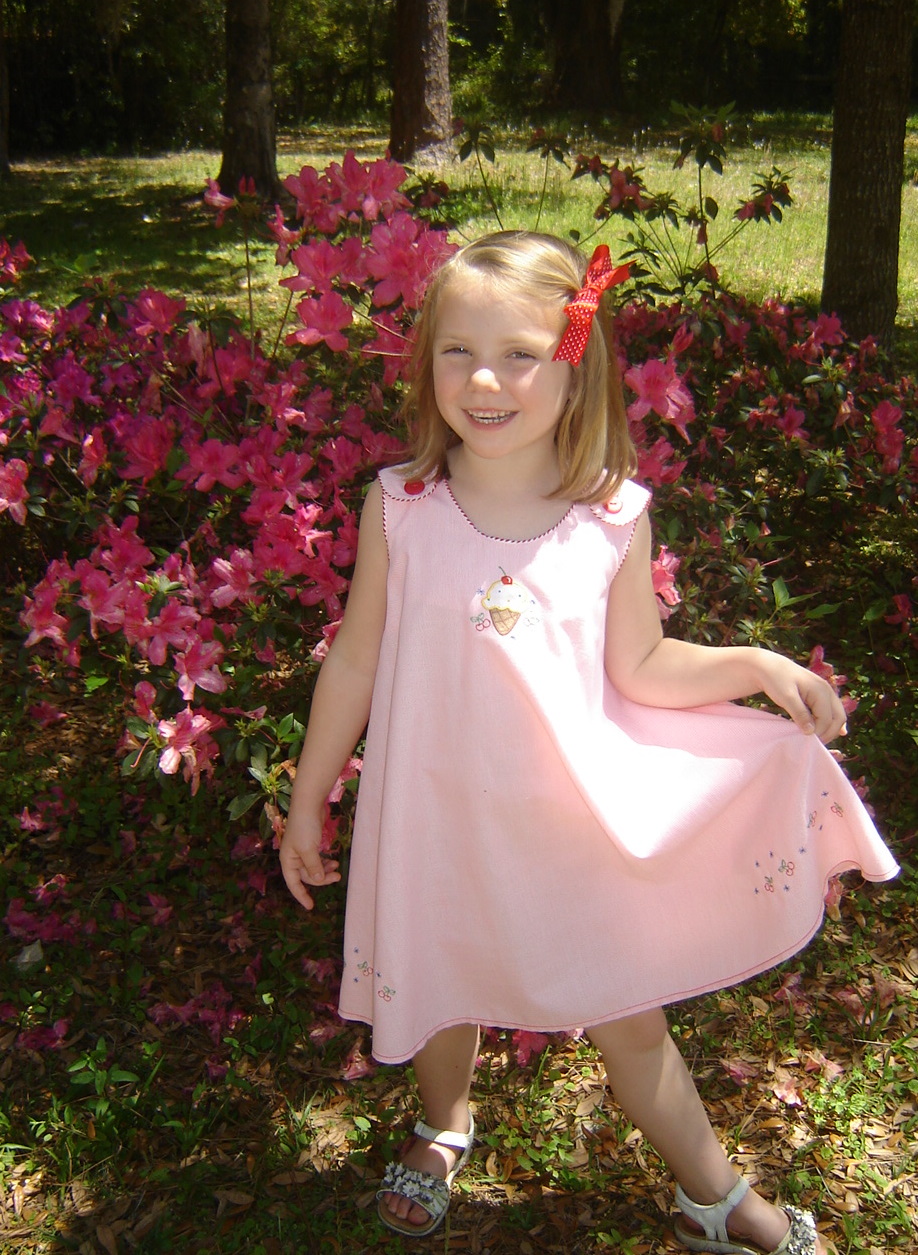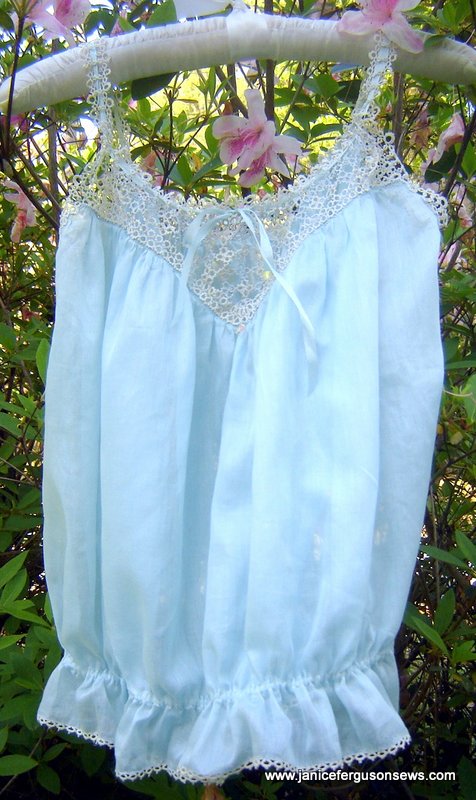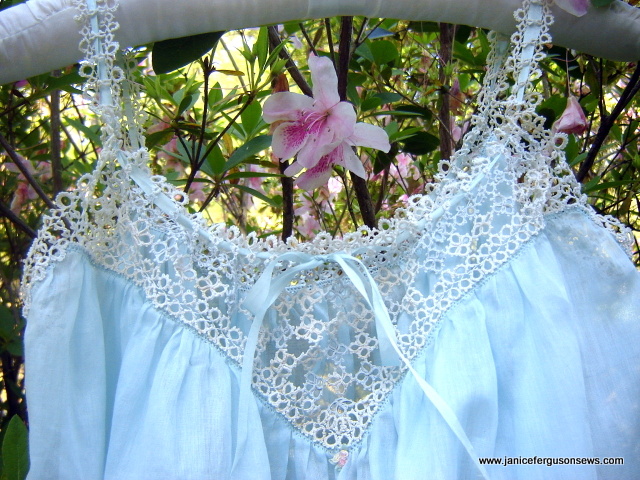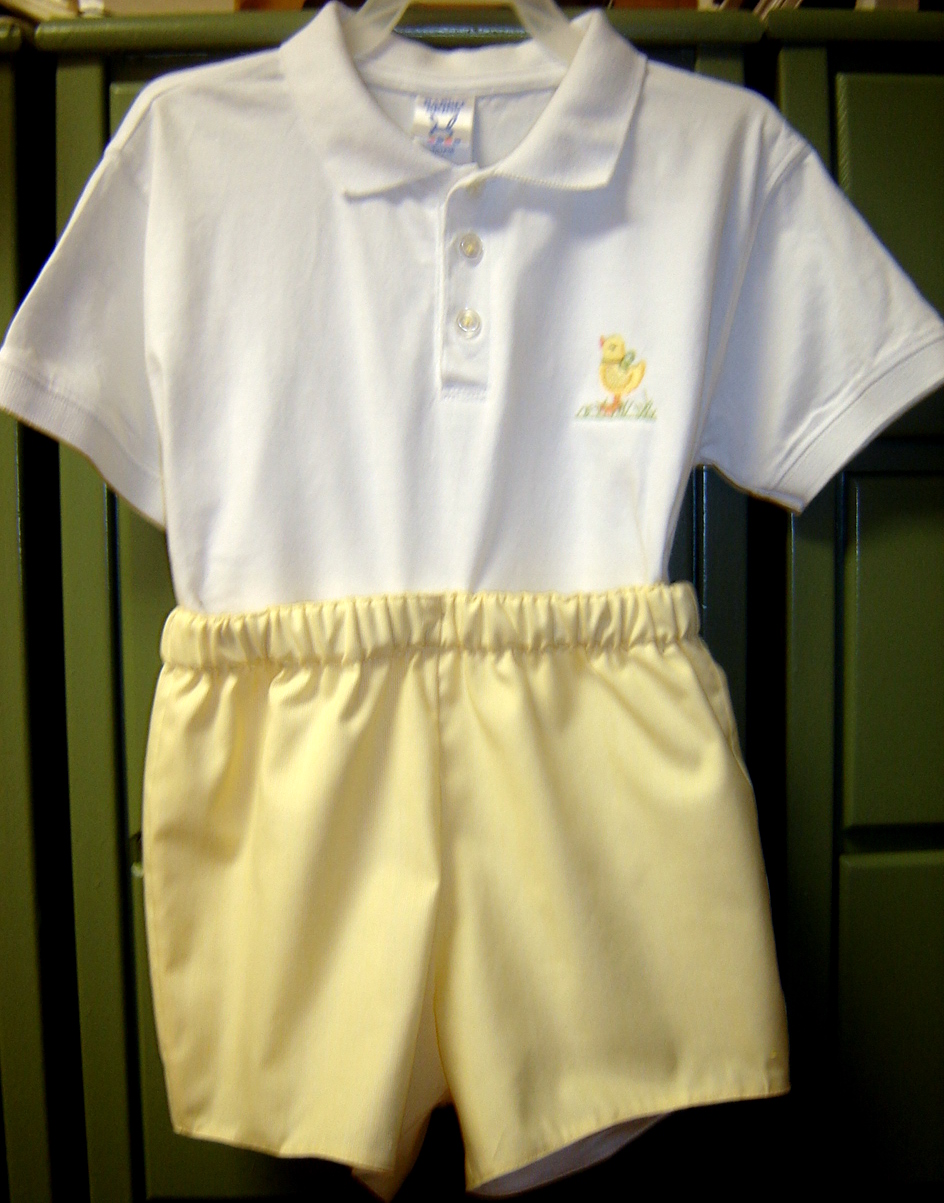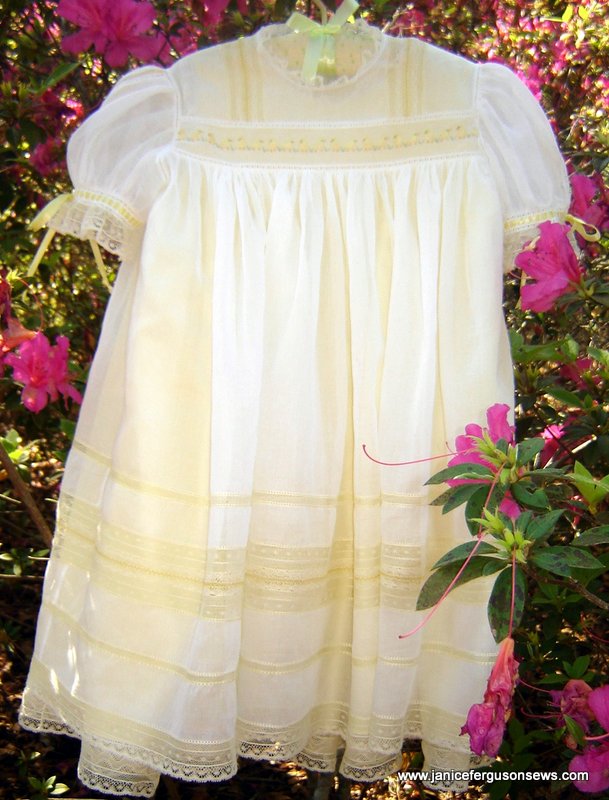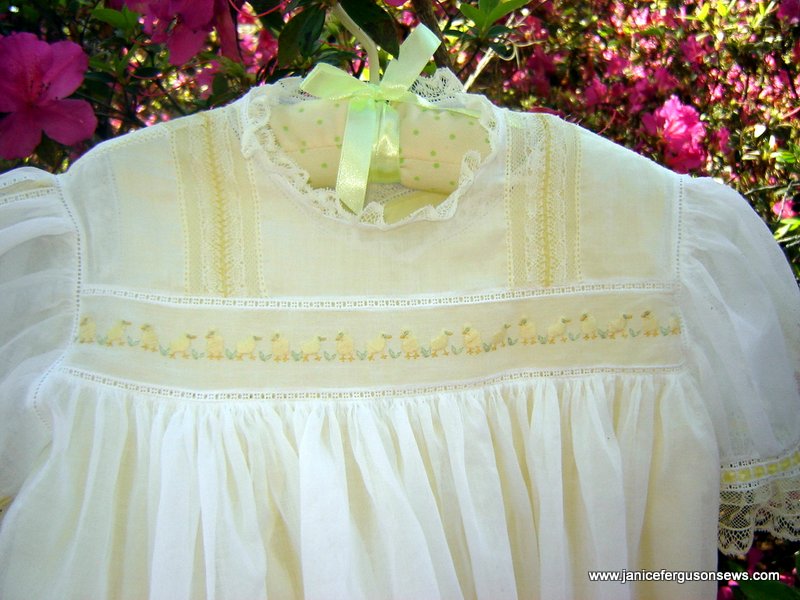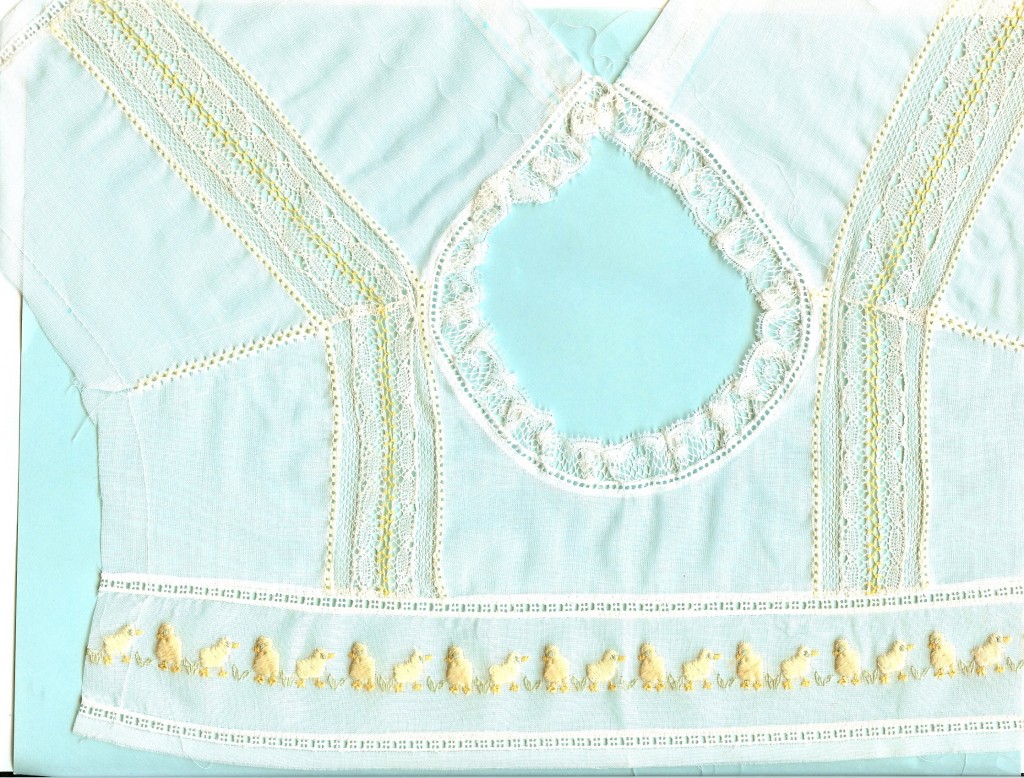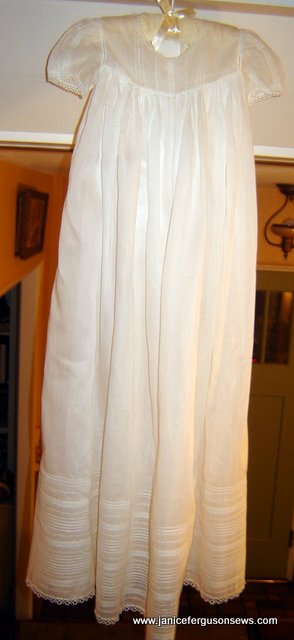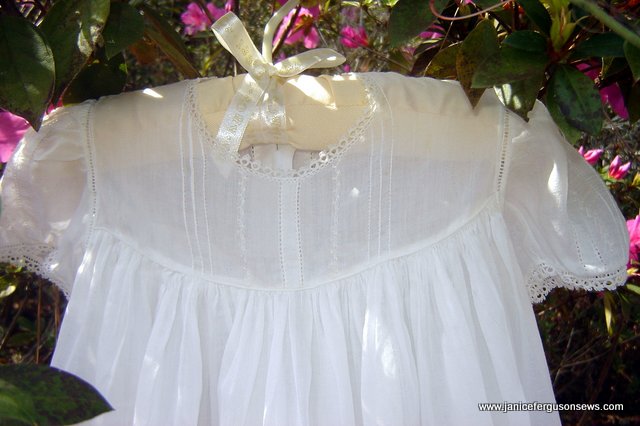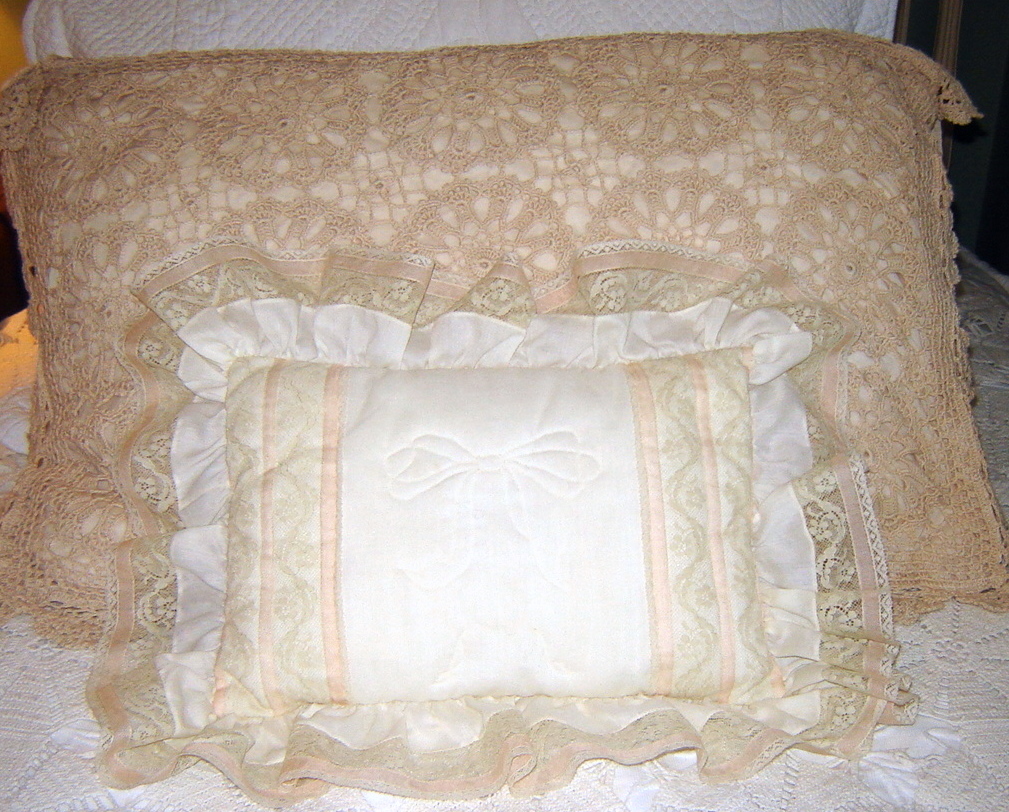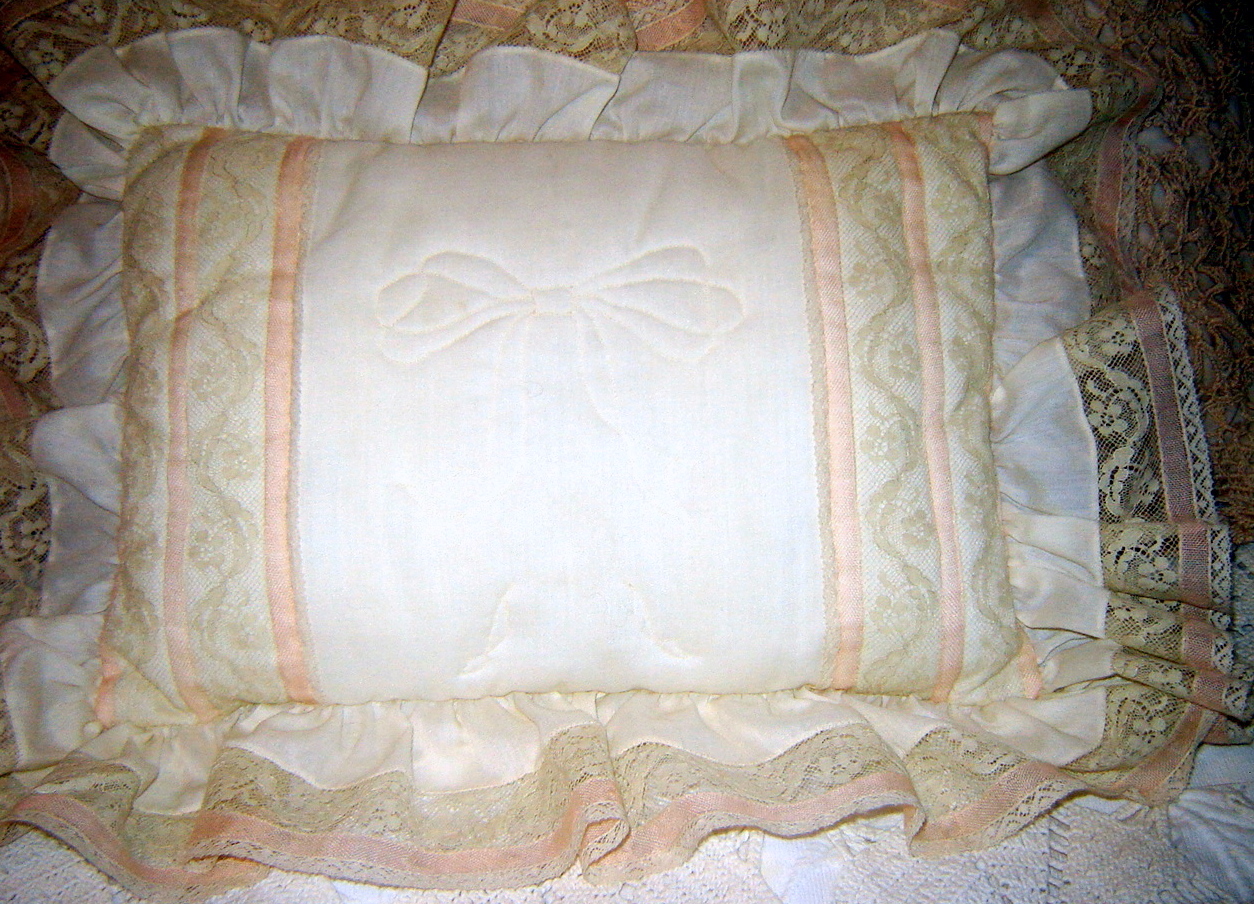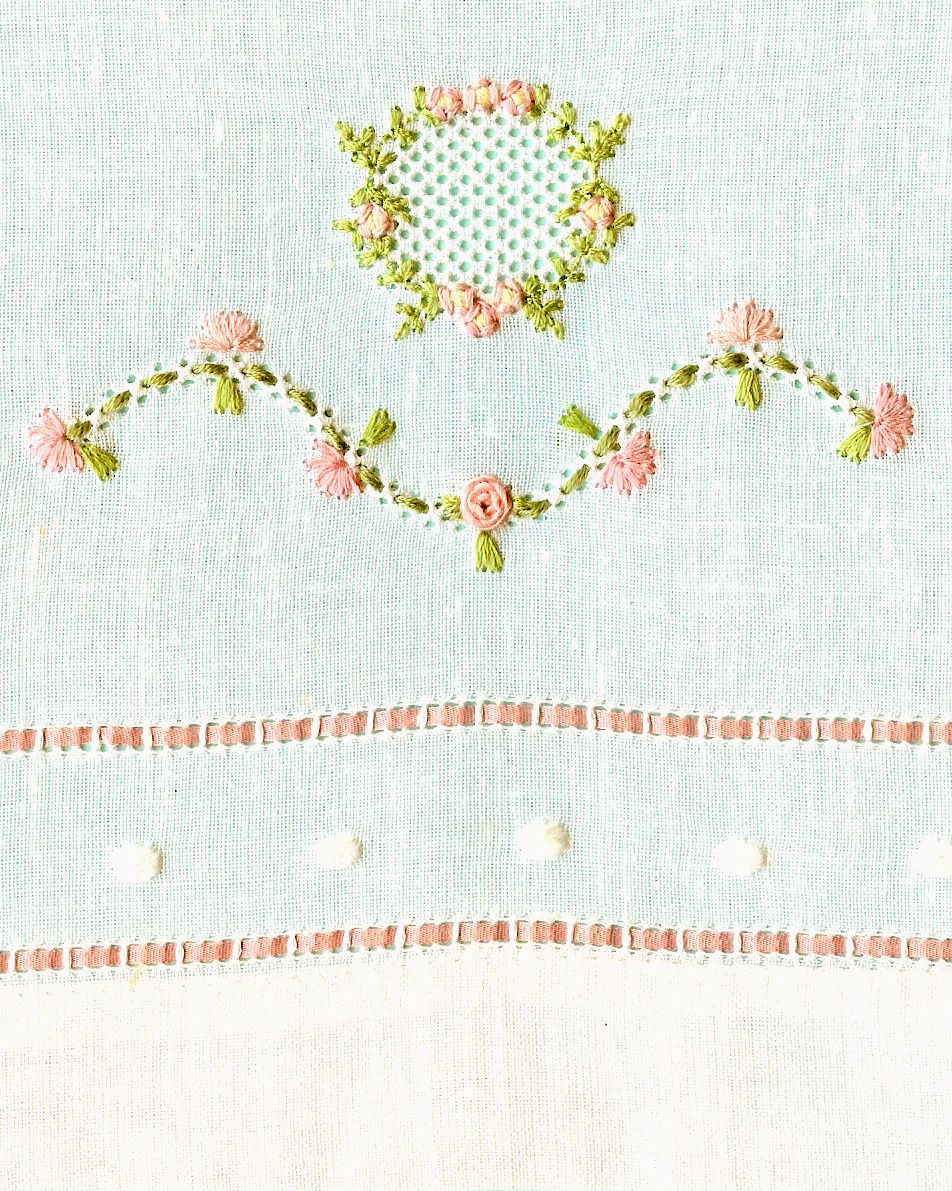“To become a grandparent is to enjoy one of the few pleasures in life for which the consequences have already been paid. “ Robert Brault
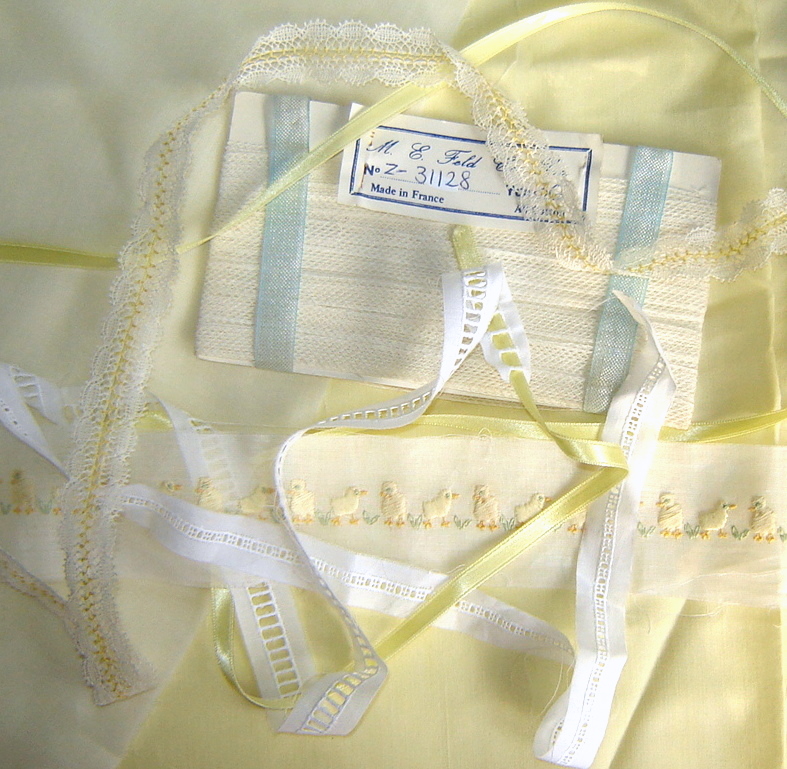
And so it is with the pre-paid pleasure of sewing these Easter garments.  I am determined to use the fabrics, patterns and trims that I already have and not buy more. All the materials for Laurel’s Easter dress have been extracted from the armoire, dresser drawers and lace boxes,  ready to be cut and sewn.
I am so excited about sewing  this garment. In Martha Pullen’s 1985 book, French Hand Sewing by Machine, the Second Book, there is a photo of a white basic yoke dress with a blue slip showing through. It has intrigued me from the moment I saw it.
Ever since then, I have wanted to make such a dress. I don’t know why I never did, but at last it has made its way to the top of my To Do list. A few items down on that same running list is a notation to make a green slip/sundress after Easter.
Because I’m trying to coordinate the three grandchildren’s outfits, yellow ducks will be the tie that binds them. Alastair’s middle name is Drake, so the duck theme was selected especially for him. The handloom shown above and in the previous post showing Alastair’s bubble seems to dictate that white or yellow be used for the body of the garments and all three children look very nice in yellow.  So Laurel’s underdress/slip will be yellow Imperial broadcloth. I might rather have used batiste, but I had plenty of broadcloth and no batiste on hand. I’m justifying this compromise by recognizing that Laurel is almost 6 and a broadcloth “slip” could also pass as a sundress. I’m also trying very hard to use fabric that I already have.
The Swiss batiste is the very sheerest, known by the names of Swiss muslin and Swiss finella. I want to use this so the pale yellow slip will shadow through as much as possible.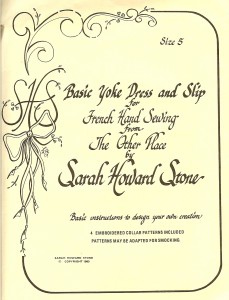
The other components are Swiss fagoting used for beading, a fancy entredeux to dress up the fagoting on the sleeves, yellow ribbon, the beautiful fagoted lace galoon and French “footing” lace, which is just a simple lace ground, without a pattern.  I chose the footing because I don’t want a decorative insertion to compete with the fagoted lace.
Sarah Howard Stone’s Basic Yoke Dress pattern will be used. This is a fabulous pattern and an incredible bargain, priced at $10-11. The pattern includes the slip and several lovely, classic embroidered and heirloom sewn collars. It is wonderful for smocked yoke dresses.
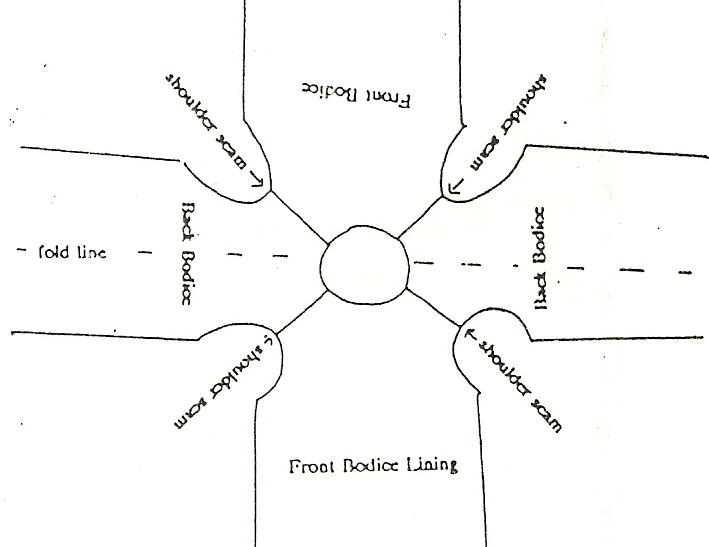  When I began sewing for my daughter, I bought this pattern in each size and have never regretted it. It was so reassuring to know that when she outgrew one size, the next would fit just fine. When switching from one pattern to another, you can never be sure how comparable their sizes are.
 When I began sewing for my daughter, I bought this pattern in each size and have never regretted it. It was so reassuring to know that when she outgrew one size, the next would fit just fine. When switching from one pattern to another, you can never be sure how comparable their sizes are.
The slip is well underway. The yoke is lined, using a technique that I’ve always liked. By placing the pattern piece for the back seam line on a fold, you create a nicely folded back edge, without the bulk of a seam. Cut two backs in this manner and cut two front yokes as per the pattern. By laying out these four pieces as shown in the diagram, seaming the shoulders and then creasing on the back fold lines, you have a fully lined, seam enclosed bodice.
It’s a good thing I started with the slip. While Laurel was here with her family, I tried the slip bodice on her. She is wearing a size 6 now in all ready-to-wear, so that’s what I cut out. It is very big on her. Fortunately, I can cut the shoulder deeper and take up the added armscye circumference in the underarm side seam. But I will use the size 5 pattern for her dress. I’m happy to be making pattern adjustments on broadcloth that ultra-sheer Swiss batiste.
Back to the sewing room……..Is anyone else sewing for Easter? Inquiring minds want to know!

